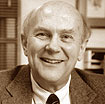The disciples had heard these words of Jesus concerning the suffering, rejection, dying, and rising of the Son of Man when they were north of Galilee in the villages of Caesarea Philippi (8:31).
Peter protested such an understanding of Jesus’ messiahship and was rebuked by Jesus (8:32-33). Jesus then used the occasion to teach about discipleship and the paradox of losing one’s life to find it (8:34-9:1).
The transfiguration of Jesus and appearance of Moses and Elijah witnessed by Peter, James, and John is a moment of glory as the voice from heaven proclaims, “This is my Son, the Beloved; listen to him!” (9:2-8). The Son of God Messiah is the suffering, rejected, dying, and rising Son of Man. As they descend from the mountain into the valley of suffering and rejection, Jesus once again expresses the reality of his death to the three disciples who accompanied him: “He ordered them to tell no one what they had seen, until the Son of Man had risen from the dead” (9:9).
While Jesus is on the mountain with the three disciples, the rest of the disciples are dealing with their inability to exorcise a demon-possessed boy. Jesus rebukes the spirit within the boy and teaches the disciples the truth about prayer: ‘This kind can come out only through prayer” (9:14-29).
We are just over half way into the gospel of Mark and the disciples are at a loss to understand the one who has called them to follow. Because the evangelist Mark is a literary and theological artist, it is only fitting that we note, before we go any farther, the three-fold cycle of Jesus’ words:
- identifying his messiahship (8:31; 9:30-31; 10:32-34);
- misunderstanding of his messiahship by the disciples (8:32-33; 9:32-34; 10:35-40)
- discipleship teaching by Jesus (8:34-9:1; 9:35-37; 10:41-45).
These three cycles each with three parts are framed by the only two healings of blindness in the gospel of Mark (8:22-26; 10:46-52).
As we note this literary structure our eyes begin “to see” that as Jesus is teaching the disciples concerning his messiahship, he is also teaching us that he is the only one who can heal our blindness to his messiahship. As Jesus opens the eyes of a blind man in Bethsaida (8:22-26) and blind Bartimaeus (10:46-52), our eyes are also opened to one who heals our blindness so that we may see the true messiahship of “the Son of Man (who) came not to be served but to give his life as a ransom for many” (10:45).
In the middle of the literary structure noted above (8:22-10:52) stands our text. Jesus and his disciples have come south from the villages of Caesarea Philippi and are now passing through Galilee on their way south to Jerusalem. Throughout these texts Jesus reveals himself as “the Son of Man” (8:31, 38; 9:9, 12, 31; 10:33, 45). Jesus’ self-identity of his messiahship “like a son of man” reflects the vision of the prophet Daniel:
“As I watched in the night visions,
I saw one like a son of man (Aramaic text) coming with the clouds of
heaven. And he came to the Ancient of Days (Aramaic text) and was
presented before him. To him was given dominion and glory and kingship,
that all peoples, nations, and languages should serve him. His dominion is
an everlasting dominion that shall not pass away, and his kingship is one
that shall never be destroyed” (Daniel 7:13-14, NRSV with Aramaic text).
Given this rich background and setting in the gospel of Mark of Jesus’ identity as the Son of Man, our text draws us into the unfolding drama as Jesus and his disciples are on the way from north of Galilee southward to Jerusalem and crucifixion: “They went on from there and passed through Galilee” (9:30).
Too often preparation time only allows for a focus on the lectionary selection — Mark 9:30-37. It is unfair to drop congregations into the middle of this section of the gospel without response to an interpretation of the surrounding verses. As we expressed earlier, the evangelist Mark is a literary and theological artist. The more we listen and hear the gospel of Mark the more we see in this word what has been so powerfully fashioned by human hands under the guidance and inspiration of the Holy Spirit.
The opening verse of Mark expresses the promise of the gospel: “The beginning of the gospel of Jesus Christ, the Son of God” (1:1). These words follow us throughout the gospel so that we may know assuredly that whatever verse, text, story, miracle, parable, teaching, etc., within this gospel and in our hearing, the beginning of the good news of the gospel takes place. God’s Word, incarnate in Jesus Christ, is present in the word of the gospel through which the Holy Spirit works faith in our lives.
The promise of the gospel is the disclosure of the good news of Jesus Christ, news so good we could never have imagined or seen it on our own. The focus of our text is its exposure of our blindness. Blindness to his messiahship only Jesus can heal. He is the Word of Mark’s gospel.
The “good news/gospel of Jesus Christ, the Son of God” (1:1), is the promise that our eyes might be opened. Our eyes are opened “to see” the Son of Man who is “betrayed into human hands, and they will kill him, and three days after being killed, he will rise again” (9:31). These are fearful and difficult words for all as reflected in the disciples’ response: “But they did not understand what he was saying and were afraid to ask him” (9:32).
Like the misunderstanding of the disciples concerning greatness, we too want to be the greatest (9:33-34). Jesus opens the eyes of our blindness through the word of the cross. In Jesus’ suffering, rejection, death, and resurrection “we see” the truth of God’s revelation in Jesus Christ.
Drawing the disciples together, Jesus teaches the truth of discipleship and the way of servant life in the paradox of first/last: “Whoever wants to be first must be last of all and servant of all” (9:35). Taking a child into his arms (9:36), Jesus teaches us the most foundational understanding of faith and discipleship: “Whoever welcomes one such child in my name welcomes me, and whoever welcomes me welcomes not me but the one who sent me” (9:37).
In the words of this text and its proclamation, “the beginning of the good news/gospel of Jesus Christ, the Son of God” (1:1), breaks into our world. Jesus is the Son of Man who comes to heal our blindness to his messiahship, and opens our eyes to the truth of servant ministry.

